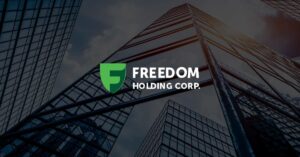A massive market opportunity is emerging in digital services, but most business owners can’t capitalize on it: while Goldman Sachs projects the global digital advertising market will reach $1 trillion by 2027, new research reveals that 60% of agencies remain trapped in founder-dependent operations that make them essentially unsellable to sophisticated buyers.
This represents billions in locked-up deal value and a significant market inefficiency that savvy investors and business owners should understand.
The agencies that solve this operational maturity problem are positioning themselves for premium exits in an increasingly active M&A environment.
The Scale of Market Dysfunction
Professional services platform Productive surveyed 783 agencies in 2024, revealing stark data about the state of the digital services market. Despite increased M&A activity throughout the year, the majority of agencies remain structurally unprepared for acquisition due to founder dependency across critical business functions.
The numbers tell a compelling story about market opportunity. While 60% of agencies report that over half their revenue is recurring, a positive indicator for buyers, that same percentage remains founder-dependent for business development. This creates a fundamental disconnect between revenue quality and operational scalability.
The market is showing signs of maturation, however. Client concentration risk has improved significantly, with only 15% of agencies now deriving more than 25% of revenue from a single client, down from 26% in 2023. This suggests agency owners are becoming more sophisticated about diversification, even if they haven’t solved the founder dependency problem.
Buyer Preferences Drive Valuation Premiums
Understanding what acquirers actually want reveals why founder-dependent agencies face such steep valuation discounts. According to Productive’s analysis, buyers explicitly prefer agencies where “growth isn’t tied to one person,” and this preference shows up directly in deal multiples.
The ideal acquisition target combines several characteristics: predictable recurring revenue, diversified client relationships, systematic business development processes, and operational independence from founder involvement. Agencies meeting these criteria command premium valuations, while founder-dependent businesses face earn-outs, clawbacks, or outright rejection.
The financial logic is straightforward. When buyers evaluate a founder-dependent agency, they’re not acquiring a business system, they’re essentially buying access to a person. This creates multiple risk factors that directly impact valuation calculations: revenue predictability becomes questionable without personal relationships, growth projections lose credibility if tied to individual capacity, and operational continuity faces uncertainty without documented processes.
Kelly Molson, an agency advisor cited in Productive’s report, explains the risk assessment: “If the founder leaves, clients and team members might follow.” This presents an unacceptable concentration risk for institutional buyers and private equity firms.
The Investment Thesis for Operational Maturity
The market inefficiency creates a clear investment opportunity for agencies willing to systematize their operations. Companies that invest in operational maturity are essentially conducting portfolio optimization at the business level, converting founder dependency into systematic value creation.
The ROI calculations are compelling. Agencies using integrated management platforms show measurable improvements across key performance indicators: better resource utilization, improved project profitability, enhanced cash flow predictability, and reduced operational overhead. These improvements translate directly into higher EBITDA margins and more attractive acquisition multiples.
Productive’s platform serves over 1,500 companies, which gives them a clear view: companies using integrated project management, resource planning, and financial tracking systems demonstrate superior operational metrics and acquisition readiness.
Systematization investment typically focuses on five areas: revenue predictability through productized services and recurring models, knowledge documentation to reduce key-person risk, leadership development for operational independence, sales system creation beyond founder relationships, and technology implementation for integrated business management.
Market Segmentation and Growth Opportunities
The $1 trillion digital advertising projection creates different opportunities across agency segments. Digital marketing agencies are best positioned for the growth wave, given their direct alignment with expanding ad spend. However, creative agencies, consultancies, and IT services firms also benefit from increased demand for digital transformation and customer experience optimization.
Niche specialization is driving additional valuation premiums. Agencies with deep expertise in specific verticals or technologies can command higher multiples due to their specialized knowledge and reduced competitive pressure. This specialization, combined with operational maturity, creates particularly attractive acquisition targets.
Geographic factors also influence opportunity dynamics. Agencies in major metropolitan markets have access to larger client bases and more sophisticated buyers, but face higher competition. Regional agencies with strong operational systems can attract premium valuations from buyers seeking geographic expansion or market consolidation.
Technology as Competitive Advantage
The role of technology in creating scalable agency operations cannot be understated. Integrated management platforms serve as the infrastructure for operational independence, providing real-time visibility into project profitability, resource utilization, and cash flow projections.
This technological foundation enables agencies to demonstrate the systematic processes that buyers require. Rather than relying on founder intuition and personal relationships, systematized agencies can show documented workflows, predictable client acquisition methods, and scalable delivery capabilities.
The competitive advantage extends beyond operational efficiency. Agencies with mature technology stacks integrate more easily with acquirer systems, reducing post-acquisition integration risk and timeline. This operational compatibility often translates into higher offer prices and more favorable deal structures.
Investment Implications and Market Outlook
The convergence of expanding market opportunity and operational maturity requirements creates a clear investment thesis. Agencies that solve the founder dependency problem are positioning themselves for premium exits as M&A activity increases throughout the digital services sector.
For business owners, the path forward involves treating operational maturity as capital allocation strategy rather than operational expense. The agencies making these investments now will capture disproportionate value as the market continues expanding toward the $1 trillion projection.
Private equity firms and strategic acquirers are increasingly sophisticated about identifying operationally mature targets. Deal flow is concentrating toward agencies with systematic operations, predictable revenue, and leadership teams capable of post-acquisition growth.
The market dynamics suggest a bifurcation: agencies that systematize operations will access premium exit opportunities, while founder-dependent businesses will face continued valuation pressure or remain unsellable entirely.
For investors and business owners tracking this sector, operational maturity has become the key differentiator between valuable assets and expensive hobbies. In a trillion-dollar market opportunity, that distinction makes all the difference.
This industry announcement article is for informational and educational purposes only and does not constitute financial or investment advice.














